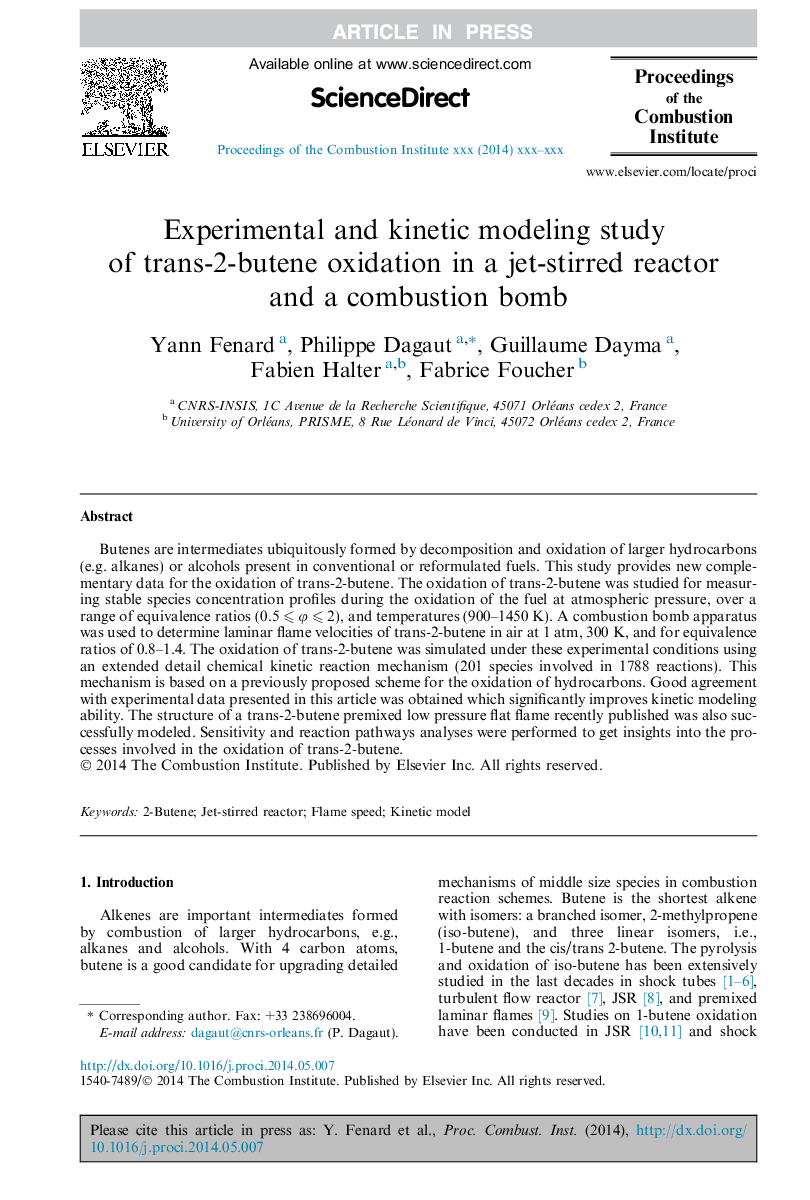| Article ID | Journal | Published Year | Pages | File Type |
|---|---|---|---|---|
| 6679260 | Proceedings of the Combustion Institute | 2015 | 8 Pages |
Abstract
Butenes are intermediates ubiquitously formed by decomposition and oxidation of larger hydrocarbons (e.g. alkanes) or alcohols present in conventional or reformulated fuels. This study provides new complementary data for the oxidation of trans-2-butene. The oxidation of trans-2-butene was studied for measuring stable species concentration profiles during the oxidation of the fuel at atmospheric pressure, over a range of equivalence ratios (0.5 ⩽ Ï ⩽ 2), and temperatures (900-1450 K). A combustion bomb apparatus was used to determine laminar flame velocities of trans-2-butene in air at 1 atm, 300 K, and for equivalence ratios of 0.8-1.4. The oxidation of trans-2-butene was simulated under these experimental conditions using an extended detail chemical kinetic reaction mechanism (201 species involved in 1788 reactions). This mechanism is based on a previously proposed scheme for the oxidation of hydrocarbons. Good agreement with experimental data presented in this article was obtained which significantly improves kinetic modeling ability. The structure of a trans-2-butene premixed low pressure flat flame recently published was also successfully modeled. Sensitivity and reaction pathways analyses were performed to get insights into the processes involved in the oxidation of trans-2-butene.
Related Topics
Physical Sciences and Engineering
Chemical Engineering
Chemical Engineering (General)
Authors
Yann Fenard, Philippe Dagaut, Guillaume Dayma, Fabien Halter, Fabrice Foucher,
